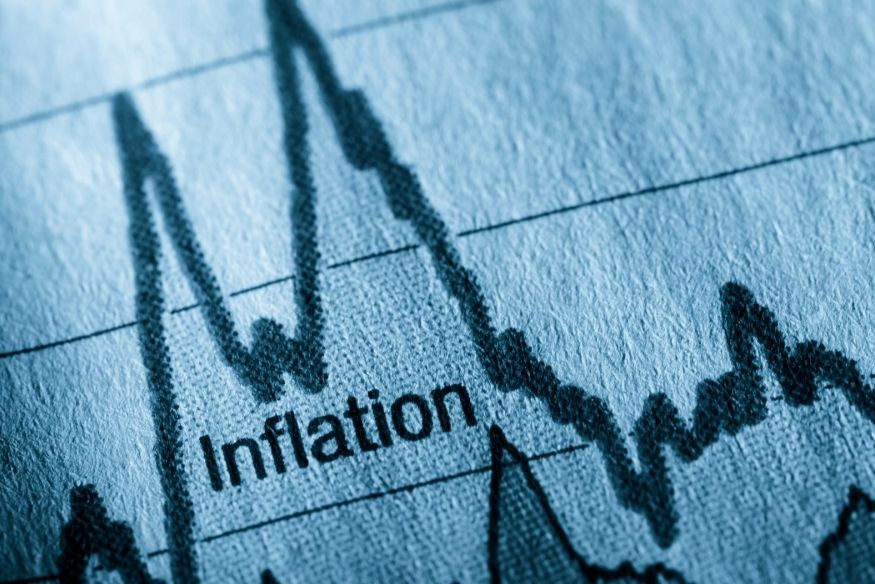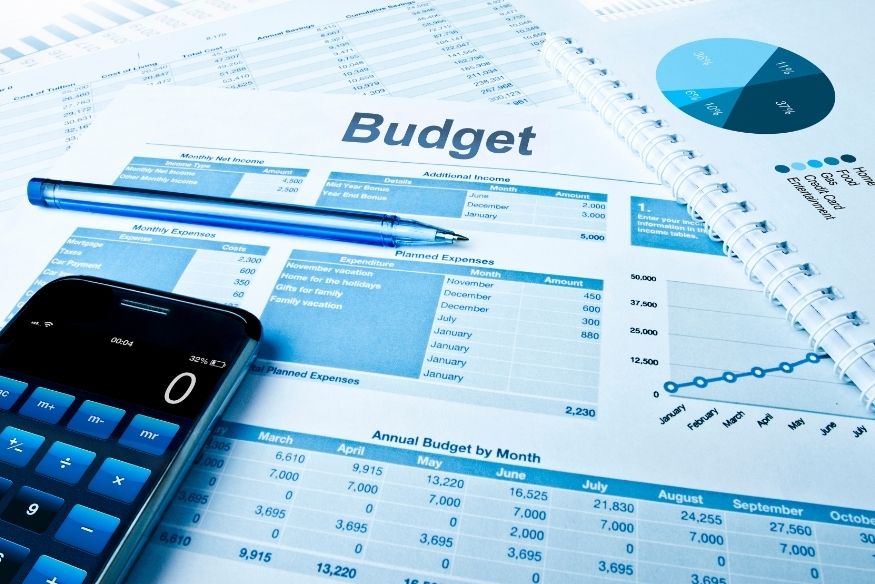As you navigate your financial journey, you’re likely to be affected by the ever-changing economic landscape. Inflation, interest rates, and employment trends are just a few factors that can significantly impact your financial stability.
You might be wondering how these economic shifts directly influence your wallet. The truth is, understanding the dynamics of the economy can help you make informed decisions about your financial planning.
By staying informed about economic trends, you can better prepare for the future and make smart choices about your money. This article will explore the ways in which economic changes can affect your personal finance and provide you with practical tips to manage your finances effectively.
Key Takeaways
- Understand how inflation affects your savings and spending power.
- Learn how interest rates impact your loans and credit cards.
- Discover the importance of employment trends in shaping your financial security.
- Get tips on adjusting your financial planning to accommodate economic changes.
- Find out how to stay ahead of economic trends and make informed financial decisions.
Understanding Economic Cycles and Their Effect on Your Finances

As you navigate your financial journey, understanding economic cycles is crucial. These cycles, which include periods of expansion and contraction, can significantly influence your income, spending, and investment choices.
Boom and Bust Cycles Explained
Economic cycles are fluctuations in economic activity characterized by alternating periods of growth (booms) and decline (busts). During a boom, the economy experiences robust GDP growth, increased consumer confidence, low unemployment, and rising asset prices. Businesses thrive, and households generally enjoy more income and job opportunities.
In contrast, a bust period often includes stagnation or recession, higher unemployment, reduced consumer spending, and economic uncertainty. These downturns can challenge household budgets and affect financial planning.
How Economic Cycles Affect Households
Households in many countries—particularly in regions with mature economic systems—feel the direct impact of these cycles. During booms, increased job security, wage growth, and credit availability may encourage spending and investment. However, during downturns, households often shift toward saving, reduce discretionary expenses, and delay major purchases.
Understanding where the economy stands in the cycle can help you adjust your financial strategies—like building an emergency fund during good times or reassessing investment risk during downturns.
Historical Case Study: Recovery After a Financial Crisis
Consider the response of several countries after the 2008 global financial crisis. Governments implemented fiscal and monetary policies—such as stimulus packages and interest rate adjustments—to stabilize the economy. Gradually, many economies saw recovery in GDP and employment rates.
| Year | GDP Growth Rate | Unemployment Rate |
|---|---|---|
| 2008 | 0.7% | 6.4% |
| 2010 | 3.0% | 8.4% |
| 2012 | -1.4% | 7.7% |
While these figures represent one context, similar trends and government actions can be observed across several developed economies.
Grasping the nature of economic changes and cycles empowers you to make proactive financial decisions. Whether saving more during expansions or protecting your finances in downturns, being aware of these patterns is key to long-term financial stability.
How Inflation Shapes Your Purchasing Power
Inflation directly influences your purchasing power, determining how far your money goes. If not managed well, inflation can erode the value of your savings and increase the cost of living.
Current Inflation Trends
In many economies, inflation is shaped by global supply chains, energy prices, and domestic demand. Central banks, such as the European Central Bank (ECB), monitor inflation closely and adjust monetary policies to maintain price stability. Variations in local conditions can cause national inflation rates to differ from broader regional averages.
Regional vs. National Inflation Differences
Even within a monetary union or common market, individual countries may experience inflation at different rates due to local factors such as wage trends, taxation, and consumption patterns. Understanding these differences helps households anticipate cost-of-living changes and make informed budget adjustments.
Protecting Your Savings Against Inflation

To preserve your purchasing power, consider investing in assets that historically perform well during inflationary periods. Common strategies include:
- Inflation-indexed government bonds
- Real estate investment trusts (REITs)
- Diversified stock portfolios with a mix of domestic and international companies
These investments may offer returns that keep pace with or exceed inflation, helping protect long-term savings.
Local Investment Options That Counter Inflation
Depending on your region, specific financial products may be available to hedge against inflation. These could include:
- Government-backed inflation-protected securities
- Mutual funds focused on commodities or infrastructure
- Real assets like property or land
Evaluating these instruments with a financial advisor can help align your portfolio with your financial goals in the face of ongoing economic changes.
Interest Rate Fluctuations and Your Debt Management
Interest rate changes are a constant in the global financial environment. They can directly impact your borrowing costs, from mortgages to consumer loans. Having effective debt management strategies is essential, especially during periods of rising rates.
Central Bank Influence on Interest Rates
In many countries, central banks—like the European Central Bank (ECB)—set base interest rates that influence lending rates across financial institutions. When these rates change, it affects everything from mortgage payments to credit card interest.
Managing Mortgages Amid Rate Shifts
If you have a variable-rate mortgage, your payments may increase when interest rates rise. To mitigate this, consider:
- Refinancing to a fixed-rate mortgage when rates are low
- Increasing your monthly payments when possible to reduce overall interest
- Building a buffer in your budget for potential rate hikes
Planning ahead can make your mortgage more manageable, even in a volatile rate environment.
Navigating Consumer Loans and Credit Cards
Consumer loans and credit card interest rates also fluctuate. Higher interest rates mean you’ll pay more over time. Tactics to manage this include:
- Consolidating high-interest debt into a lower-rate loan
- Negotiating better terms with lenders
- Paying more than the minimum on credit cards to reduce principal faster
Staying Proactive with Rate Changes
Keep an eye on monetary policy announcements and forecast changes. Adjusting your debt strategy in response to interest rate movements can protect your financial health and reduce stress during economic changes.
Employment Trends and Income Security in Changing Markets
The job market is evolving due to technological advancements and global economic conditions. Staying informed about employment trends is essential for maintaining income security and adapting to economic changes.
Labor Market Outlook
In many developed regions, jobs in technology, healthcare, and renewable energy sectors are expanding rapidly. Conversely, traditional sectors such as manufacturing may see a decline.
Growing and Declining Industries
Industries showing consistent growth:
- Information Technology
- Healthcare and Social Services
- Renewable Energy
Industries facing contraction:
- Traditional Manufacturing
- Certain segments of Retail and Manual Labor
Identifying these trends can help you plan career changes, pursue retraining, or invest in skills that match future job markets.
Building Multiple Income Streams
Diversifying your income sources can offer greater stability. Consider:
- Freelancing or starting a side business
- Investing in dividend-paying stocks
- Continuing education or vocational training
These strategies help reduce dependence on a single job and improve long-term resilience.
Social Security Systems and Support
Many countries offer social safety nets that support individuals during employment transitions. These include:
- Unemployment benefits
- Job retraining programs
- Subsidized education and career counseling
Being aware of and accessing these resources can ease financial pressure and support career transitions during periods of economic change.
The Housing Market: Responding to Economic Changes

The housing market is particularly sensitive to economic changes, responding dynamically to fluctuations in interest rates, inflation, employment trends, and demographic shifts. Understanding these patterns is essential for making informed decisions on buying, renting, or investing in property.
Current Housing Trends in Urban Centers
In metropolitan areas across different regions, housing trends reflect both national and local economic conditions. Cities with strong job markets and infrastructure investment tend to see rising property values and high demand, while areas facing population decline or industrial slowdown may experience price stagnation or drops.
| City | Avg. Price/m² (Est.) | Demand Trend |
|---|---|---|
| Capital Region | €4,500 | Stable to Increasing |
| Mid-sized City | €3,000 | Increasing |
| Small Urban | €2,500 | Decreasing |
These examples are illustrative of how diverse factors—including population growth, access to transport, and regional economic strength—impact housing demand.
Buying vs. Renting During Economic Uncertainty
When economies face uncertainty, the decision to buy or rent becomes more complex:
- Buying a home offers equity building, price stability over time, and potential value appreciation. However, it requires a significant upfront investment and entails long-term commitment, which can be risky in volatile job markets.
- Renting provides flexibility, fewer upfront costs, and is ideal for those anticipating relocation or uncertain income. However, it lacks the wealth-building benefits of ownership.
A hybrid strategy may also be worth considering—renting in high-cost regions while investing in property elsewhere.
Tax Implications of Property Ownership
Real estate ownership typically comes with tax responsibilities that vary by country, but may include:
- Transfer or Stamp Duties: Paid when purchasing property, often calculated as a percentage of the purchase price.
- Annual Property Taxes: Based on assessed value and local tax rates.
- Capital Gains Taxes: Applied when selling the property for profit.
Understanding these costs is essential for accurately assessing affordability and the total cost of ownership.
Economic Sensitivity of Shared Ownership Structures
In many regions, owning an apartment or condominium includes shared responsibility through housing associations or condo boards. These structures can be financially sensitive to:
- Unexpected maintenance or renovation costs
- Fluctuations in property values
- Changes in interest rates affecting communal loans or reserve funding
Buyers should review financial records, future repair plans, and debt levels of these organizations before committing.
Real Estate and Economic Changes
Property decisions should always be framed by a clear understanding of economic indicators. From mortgage rates and inflation to regional job growth and taxation, each factor influences your costs and long-term returns.
By staying informed and considering both personal and macroeconomic contexts, you can make real estate decisions that support your financial stability and growth—even in times of economic uncertainty.
Investment Strategies During Different Economic Phases
Effective investing means adapting your strategy to match the phase of the economic cycle. Whether the economy is expanding or contracting, adjusting your portfolio accordingly can help protect your assets and seize growth opportunities.
Defensive Investing During Economic Downturns
When economic conditions decline, many investors pivot to more conservative assets. Instead of chasing high returns, the focus shifts to preserving capital. This often involves reallocating funds toward safer vehicles such as government bonds or large, established companies known for consistent performance—commonly referred to as blue-chip stocks.
Additionally, spreading investments across various sectors and regions remains a key principle for managing risk. Sectors like utilities and consumer staples tend to offer more stable returns during downturns.
Growth-Oriented Investing in Expanding Markets
In contrast, when the economy is on an upswing, there’s room to adopt a more aggressive investment posture. Growth-oriented strategies may emphasize sectors like technology or construction—areas typically energized by increased consumer spending and business expansion. Investors might also look to emerging markets, where growth potential can be significant. Staying attuned to macroeconomic data and sector-specific developments helps in identifying timely opportunities for higher returns.
Balancing Local and Global Investment Perspectives
Investors in smaller or more stable economies often face a decision between focusing on local investments or diversifying internationally. Local assets might offer stability and familiarity, while international investments open the door to higher growth potential in dynamic markets.
Striking a balance between the two can help build a resilient portfolio, capable of weathering localized downturns and taking advantage of global economic trends. However, such diversification also requires careful attention to currency fluctuations and geopolitical factors.
Adjusting Your Portfolio with the Economy
The economy isn’t static, and your investment approach shouldn’t be either. Regular portfolio reviews help ensure that asset allocations remain in line with your risk tolerance and the broader economic environment. Changes in interest rates, inflation expectations, and industry performance can all signal the need for rebalancing.
Seeking guidance from financial professionals during transitions between economic phases can also provide valuable insights. Ultimately, staying informed and adaptable allows you to make the most of economic changes while minimizing potential losses.
Economic Changes Finance: Creating a Resilient Budget
A well-structured budget can be your financial lifeline in uncertain times. A resilient budget helps you manage your money and prepare for surprises.
Flexible Budgeting Techniques for Diverse Households

Flexible budgeting lets you change your spending as the economy changes. Start by sorting your expenses into must-haves and nice-to-haves. Then, adjust your discretionary spending based on your budget.
- Track your monthly expenses to understand where your money is going.
- Prioritize essential expenses such as housing, food, and utilities.
- Adjust your non-essential spending based on your current financial situation.
Emergency Fund Sizing Based on Economic Conditions
Having an emergency fund is key to financial stability. The fund’s size depends on your income, expenses, and the broader economy.
| Economic Condition | Recommended Emergency Fund Size |
|---|---|
| Stable Economy | 3–6 months’ worth of expenses |
| Uncertain Economy | 6–12 months’ worth of expenses |
Where to Keep Your Emergency Savings
Keep your emergency savings in an accessible and safe place. Consider savings accounts that offer good interest and quick access, such as those provided by reliable local or international banks.
Adjusting Discretionary Spending During Economic Shifts
When the economy is down, cut back on discretionary spending. Look for ways to save, like eating at home or canceling subscriptions. Use that money for savings or to cover essential needs.
By using these tips, you can make a resilient budget. It will help you handle economic changes with confidence.
Navigating Economic Changes with Financial Confidence
Understanding how economic changes affect different aspects of your financial life—whether it’s inflation, employment, housing, or investing—can empower you to make better choices and safeguard your financial future. Each section of this article provides strategies to adapt and thrive amid uncertainty.
From creating a resilient budget and investing strategically, to understanding your local housing market and adjusting to global financial trends, financial preparedness is key. With knowledge and proactive planning, you can face economic cycles with resilience and confidence.
Make it a habit to review your financial plan regularly. Adapt it as economic conditions shift. The more you understand and prepare, the more capable you become at turning challenges into opportunities for growth.
Taxation and Government Policies: Navigating Changes
Tax laws and government policies are always changing. It’s important to know how these changes affect your money planning. Keeping up with new rules can help you manage your finances better.
Recent Tax Reforms in Various Regions
Governments around the world frequently adjust tax codes to respond to economic shifts. These reforms might involve updating tax brackets, introducing new credits, or altering deductions. Understanding these changes allows you to optimize your financial planning and potentially reduce tax liabilities.
| Tax Reform | Description | Impact on Taxpayers |
|---|---|---|
| Adjustment of Tax Brackets | Changes in income thresholds for different tax rates | Potential reduction in tax rate for some incomes |
| Increased Tax Deductions | Higher deductions for specific expenses | Lower taxable income for eligible taxpayers |
| Introduction of New Tax Credits | Credits against tax owed for specific situations | Direct reduction in taxes for qualifying individuals |
Optimizing Your Tax Position During Policy Shifts
To navigate policy changes successfully, it’s essential to understand the tax-advantaged tools available. This includes using accounts like retirement savings plans or health savings accounts, which can offer significant tax benefits depending on the local legislation.
Staying informed through credible sources and consulting with a tax advisor can help you take full advantage of deductions and credits that apply to your situation.
How Social Benefits Respond to Economic Changes
Government-provided benefits such as unemployment support, healthcare subsidies, or housing assistance often adjust with economic conditions. Being aware of how and when these benefits are updated allows you to make informed decisions during job transitions or economic downturns.
Understanding eligibility criteria and applying for the right programs at the right time can provide critical financial relief and planning stability.
Retirement Planning Amid Economic Uncertainty
Planning for retirement during uncertain economic times requires extra attention. Fluctuations in the economy can impact both public pension systems and private retirement savings.
The Role of Pension Systems and Economic Variables
Public pension systems, while foundational, are often influenced by broader economic trends, including inflation, employment levels, and demographic changes. These variables can affect benefit calculations and the sustainability of pension funds.
Understanding Your Pension Forecast
A pension forecast offers an estimate of your future retirement income. Reviewing this regularly can guide your savings strategy and highlight any gaps in your retirement funding. Knowing what to expect allows you to plan effectively.
Supplementing State Pensions with Private Savings
Relying solely on public pensions may not be sufficient for a comfortable retirement. Building a separate savings plan through private pension funds, personal investments, or employer-sponsored retirement accounts adds security and flexibility to your retirement planning.
Retirement Age Considerations in a Changing Economy

Economic volatility may affect when and how you choose to retire. Retiring earlier might reduce your benefits, while delaying retirement could enhance them. Understanding these trade-offs helps you make a decision aligned with both your financial goals and the economic landscape.
By keeping up with legislative updates, adjusting your savings approach, and regularly assessing your retirement plans, you can better navigate economic uncertainty and build a secure financial future.
Conclusion: Building Financial Resilience in Changing Economic Times
Economic changes can have a significant impact on your financial well-being. Recognizing these shifts and adapting your financial strategies accordingly is key to maintaining long-term stability.
Understanding economic cycles, inflation patterns, and employment trends empowers you to make informed decisions. This knowledge helps you protect your savings, manage your debt wisely, and lay a strong foundation for future financial goals. To build resilience, prioritize adaptable money management strategies. Focus on creating a flexible budget, diversifying your investments, and making the most of available tax incentives.
By actively managing your finances and staying informed about the economic landscape, you can face uncertainty with greater confidence. Start applying these strategies today to secure a more stable and empowered financial future.









